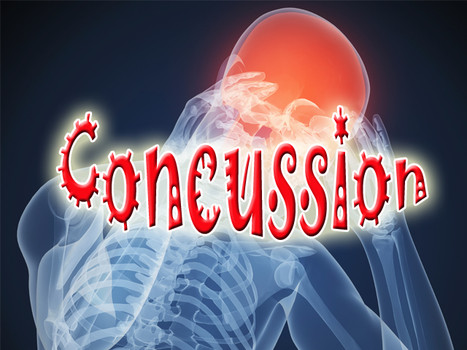EDUCATION ON ALL ASPECTS OF A CONCUSSION
September 15 – October 15, 2015
Ask the Experts is a free online forum wherein respected experts participate in a question- and-answer discussions regarding a specific topic. If you have a question or comment regarding concussions, please use the comment section below. Our featured experts will respond accordingly.
MEET THE EXPERTS
DR. JOHN SHUMKO, M.D., Ph.D, Chairman of Physical Medicine and Rehabilitation, Medical Director, Sports and Physical Medicine Institute
DIANA TOTO, M.S Program Director, Matthew J. Morahan III Heath Assessment Center for Athletes at Barnabas Health
We hope you find the information helpful!
The information provided on the EP website (ww.eparent.com) is intended for your general knowledge only and is not a substitute for professional medical advice or treatment for specific medical conditions. You should not use this information to diagnose or treat a health problem or disease without consulting with a qualified healthcare provider. Please consult your healthcare provider with any questions or concerns you may have regarding your condition.




From user: Michelle Oates
What is the efficacy of the hyperbaric chambers on children with concussions.
I am actively involved with my grandchildren all of whom play a number of competitive games from ice hockey to soccer to football. What are the early warning signs of a concussion, i.e. how do you distinguish between excessive fatigue and the signs associated with serious concussive events?
Hello Maureen, it is important to track and trend symptoms over time. If there is suspicion of a head injury remember to ask questions of your grandchildren such as “Do they remember any hard impacts over the last few days, weeks or months?” Now a days we see our kids at a higher level of competition than ever before and given how resilient they are, it is easy to brush off the falls, impacts, and hits, because with competition, those become somewhat of a regular routine. What distinguishes brain injury from the average hit are symptoms and warning signs. If you spend alot of time with your grandchildren, things you may notice are changes in behavior, sleep pattern, sensitivity to light or noise, nausea, blurred or double vision, difficulty concentrating, inability to focus in school, frequent headaches, issues with balance or issues with memory. Excessive fatigue would be related to lack of energy throughout the day, frequent naps, and complete exhaustion. Energy levels overall change and there would be a distinct difference from their normal self which is where the comparison should be most emphasized. Also, track and trend symptoms over time and what they are doing when they occur ( watching tv, reading, cell phone use). Here at our center we recommend keeping a 7 day log. If they are getting worse with longer spans of time with these activities there is a higher probability their brains are recovering from some type of injury. Again, when in doubt keep them out and always seek the advice of a physician that can properly evaluate the case.
How often are serious concussions encountered in girls soccer? What are the symptoms associated with these types of events and what should the immediate intervention be in the event a physician is not readily available?
Julia, it may surprise you to know that prevalence of concussion in girls soccer generally falls third overall out of all sports (right below ice hockey and football). Girls generally have more concussions than boys. A theory of why the frequency of concussion in female sports is greater is attributed to weaker neck muscles as compared to males. Additionally, females are thought to report their symptoms more honestly. It is important athletes are educated on the signs and symptoms to look out for and the repercussions of not reporting them honestly. Remember not all concussions result in immediate symptoms. An athlete may be concussed and exhibit symptoms several days later. Symptoms to look out for acutely and on the field after an impact are an athlete looking clumsy, disoriented, lightheaded, exhibiting memory loss, headache, dizziness, nausea, vomiting, lack of motor coordination, blurry or double vision, seeing bright lights, sensitivity to light, difficulty balancing, etc. Remember as a coach or parent, our job is to recognize and report, not diagnose.With any suspicion of brain injury, do not hesitate to pull the child off the field and get them medically evaluated. It should be the call of the physician to decide appropriate measures from there.
So much has been written about the effects of brain blast injury as a result of IED devices … has there been any work done regarding the relationship of epilepsy resulting from such concussive events?
Stephen Wolf, MD
On behalf of Dr. John Shumko:
Dr. Wolf, You raise a very good question. Given that the true prevalence of epilepsy among patients suffering from traumatic brain injury is still unknown, it is difficult to determine an exact correlation. However, according to a recent article published in 2014, “Blast TBI Models, Neuropathology, and Implications for Seizure Risk,”it is expected that ” 10-25% of patients with closed head TBI and over 50% of patients who have penetrating TBI will develop post-traumatic epilepsy or PTE.” Overall more conclusive studies will need to be done to determine the true cause and effect relationship. To read more about the issue at hand please feel free to access this article at http://www.ncbi.nlm.nih.gov/pmc/articles/PMC3988378/. Thank you.
I am the founder and coach of the League of Dreams, a non profit organization in Maryland whose mission it is to work with children and youth with disabilities and help them play baseball. My question is this: where can I find some useful, pragmatic tips for coaches and assistant coaches on how to recognize the important early warning signs of concussion. Does Barnabas publish such a thing or is there something you can share with us.
Many thanks.
Good afternoon Frank, and thank you so much for reaching out. We have plenty of literature that we can share with you that is both parent and coach friendly. If you’d like to get me some contact information I can email it to you in a PDF. Additionally, if you go to our website and visit http://www.barnabashealth.org/morahan and click on athlete screenings there is some information and handouts from the CDC. Separately, we have recently organized a webinar with Special Olympics New Jersey for coaches. That webinar was recorded and will be available to share with other organizations such as yourselves in the near future. Please feel free to check back with me regarding this as I think it would be ideal for your coaches and would be happy to gain you access to it once it is released.
Good evening Dr. Rader and thank you for your question. As the world of concussion management continues to evolve it is important that as clinicians we continue to utilize more tools to assess acute concussion and track recovery. An element of balance and vision are two systems that can be significantly effected by brain injury and therefore should be properly assessed in both the acute and recovery phase. I have colleagues that use the tandem gait, our center here uses biodex balance system and sway testing along with the Rhomberg. No matter what tool is being used, it is most important that the vestibular system is being challenged and evaluated in some way throughout recovery. Regarding the King- Devick (K-D), 50% of the brains pathways are tied to vision. Assessing eye movement as a sideline tool with the K-D or within the acute phase ( prior to 24 hours) can tell us if there is a significant change from baseline. The main point is that the consistency of these tests and the testing environment are well established to ensure validity of results in both the baseline and post -concussive setting. These tools then become extremely valuable in providing more accuracy for individualized return to play (work or activity) timelines.
Dear Dr. Shumko and Ms. Toto,
Please comment on the recent article that suggests adding the King-Devick vision test and tandem gait test to a concussion evaluation. Thank you, Rick Rader, MD